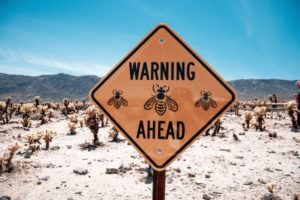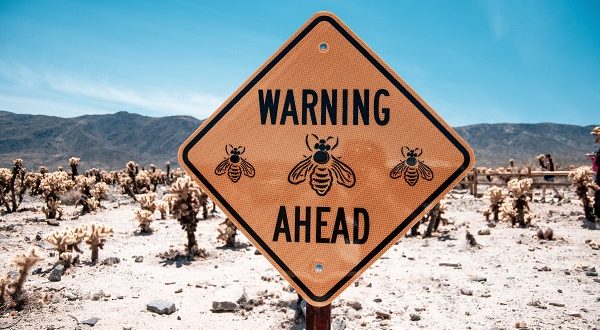 Wasps are a danger and a nuisance throughout the warmer months, and in late February and early March they pack an even greater punch. This is the time of year when wasps are seriously interested in protein – something which sees them killing not only other insects (including our precious native species) but coming into the house, hovering around compost piles and rubbish bins, and invading picnic sites in search of meat scraps. It’s also the time of year when they raid beehives, carting away the bees’ valuable stores of winter honey, and attacking developing grubs.
Wasps are a danger and a nuisance throughout the warmer months, and in late February and early March they pack an even greater punch. This is the time of year when wasps are seriously interested in protein – something which sees them killing not only other insects (including our precious native species) but coming into the house, hovering around compost piles and rubbish bins, and invading picnic sites in search of meat scraps. It’s also the time of year when they raid beehives, carting away the bees’ valuable stores of winter honey, and attacking developing grubs.
If you or your neighbours are troubled by wasps, it’s easier than you may think to track down and destroy the insects’ nests. And by following a few simple techniques, you can also keep yourself safe while you’re doing it.
As soon as you spot wasps obviously gathering around a food source, position yourself out of their flight path, at a safe distance away, and observe them coming and going from their food source. The best times of day to do this is at dawn or dusk, but if you have keen eyesight, you’ll also be able to follow them flying through the air on a sunny day. Be patient. You may need to observe in one spot for up to 10 minutes before you become used to spotting them in flight. Once you find which direction they are flying in, move no more than 10-20 metres in that direction, and observe again. Keep moving, the same distance at a time, and eventually, the wasps will lead you to their nesting site (in some cases, where forest or private property precludes your venturing further, you will have to give up the chase, but very often, the nest is closer than you may think.) Never venture through long vegetation as you are searching – it is all too possible to stand on a wasps nest without realising it is there.
Once you have found the general vicinity of the nest site, keep well back from it. Instead, observe only. If the entrance is easily accessible (such as in the hollow of a tree or a dry clay bank) you are home and hosed. If it is obscured (by vegetation, for example), call your local council or a professional beekeeper to do the job as they will have the necessary protective gear to wear while they are clearing their way to the nest entrance.
If the nest entrance is easily accessible, mark the site (the mapsme app is great for this) and return again to it after dark with your chosen insecticide. (Note: never shine your torch directly at the nest entrance or you will draw the wasps out and they will attack you.)
Apply the insecticide as directed, observing all safety instructions, and return again the following afternoon, keeping well back from the nest entrance. If your kill has been successful, there will be no sign of activity as the wasps will have carried the insecticide back into the nest, killing adults as well as young grubs. If there is still some activity, follow the instructions on your insecticide container. It may be that you need to repeat the treatment after dark.
Tip: It can be easier to follow wasps in flight if they are dusted with flour. Never attempt to dust a wasp while it is active. Instead, apply a coating of flour to a portion of the wasps’ food source at night, when the insects are in their nest. During the day, they will walk through the flour, partially coating themselves in it – and you will find it easier to spot them in the air.










Join the Discussion
Type out your comment here:
You must be logged in to post a comment.